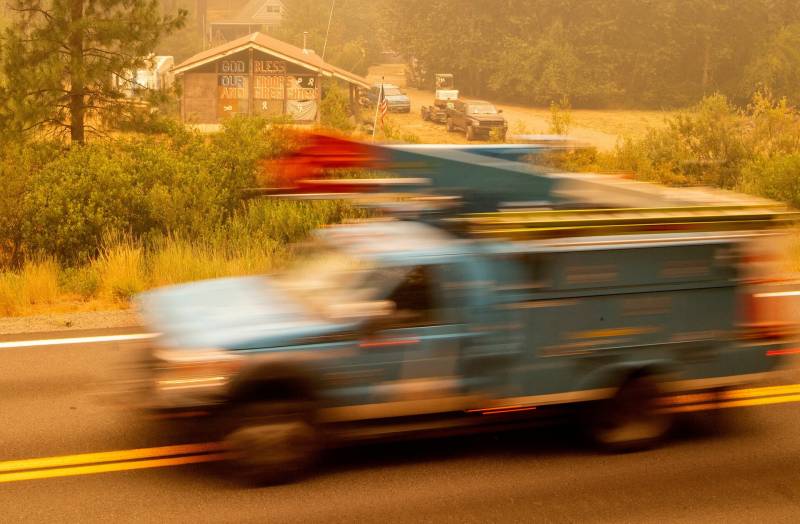Faced with paying tens of billions of dollars in damages to victims of wildfires that were started by its equipment, PG&E filed for bankruptcy in Jan. 2019. The following year, it pleaded guilty to 84 counts of involuntary manslaughter for its role in sparking the Camp Fire.
Climate change has greatly amplified California’s wildfire risk. Meanwhile, the state’s longtime fire suppression policies of trying to stomp out every fire has helped load forests with fuel to burn, further exacerbating the problem.
PG&E’s power lines zigzag across these tinderbox forests, and the utility — as part of a last-ditch effort to prevent wildfires — has begun cutting power to communities in vulnerable areas for days at a time during strong wind storms, a policy it calls “public safety power shutoffs.”
The utility argues that burying the equipment underground is a safer alternative that would obviate the need for these planned outages.
At the commission hearing in October, PG&E Chief Operating Officer Sumeet Singh argued the company needs to underground its lines to ensure the safety and reliability of its energy services.
“It is critical that we have the needed funding to continue to make our systems safer for our customers and our hometowns that we have the privilege to serve,” Singh said.
“This is a shockingly expensive plan and it will have major impacts on retail rates,” said Severin Borenstein, a UC Berkeley energy economist. “And, of course, everyone is concerned about that.”
In asking ratepayers to foot the bill for this project, he added, PG&E has little incentive to try to minimize the costs.
“If they can do something that involves a lot of capital expenditures, they get to earn a rate of return on that,” Borenstein said. “And the rates of return that utilities have been earning are likely well above the real cost of raising funds. And so there’s profit in there and they have an incentive to over-invest.”
Utilities all over the country, particularly in fire-prone regions, face similar challenges, he noted.
“I think there’s a very valid question of what to do and whether doing this primarily through undergrounding lines is the right policy,” Borenstein said.
No matter what path utilities take, the larger debate is over who should bear the costs: company shareholders, ratepayers or the state. “The real question is, does society bear them through raising utility rates or does society bear them through paying for them through the state budget,” he said.
Regulators have also floated two less-costly, alternate plans — which they will also consider later this month — in which the company would keep more of its lines above ground but install protective covers to insulate them.
One plan would allow the company to bury just 200 miles of line and install 1,800 miles of insulation and other safety measures, while the second would let it put 1,230 miles underground — resulting in an estimated average monthly bill increase of just over $30, or about $10 less per month than PG&E’s plan, according to a commission fact sheet.
But Singh, at last month’s hearing, pushed back on the alternate proposals, contending that burying the lines would be significantly safer and that the company could drive down project costs by purchasing equipment in bulk and guaranteeing work for its contractors.
Consumer groups have also pushed back hard on PG&E’s plan, saying it would be too expensive for ratepayers.
“We are deeply concerned that double-digit rate increases will affect the financial security of older adults and their families,” said Michael Murray, director of business integration for AARP. “Particularly at a time when housing, food, health care prices are climbing. And if PG&E gets what it’s asking for, that’s what would happen.”
AARP members delivered 14,000 petitions to state regulators last spring voicing concerns about the potential rate increase.
